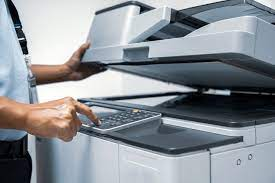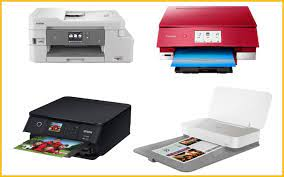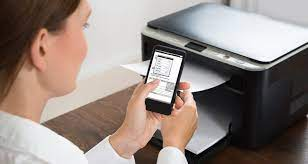Wireless copiers, with their advanced technology, have become a staple in modern offices, revolutionizing the way businesses handle document reproduction. The shift from traditional wired setups to wireless alternatives brings forth a range of wireless copier advantages and disadvantages that go beyond mere convenience. This article explores the key benefits of utilizing wireless copiers in professional environments.
1. Enhanced Connectivity
Wireless copiers provide seamless network connectivity options, allowing multiple users to access the copier without the constraints of physical cables. This enhances collaboration by facilitating easy printing and scanning from various devices, promoting a more dynamic and flexible working environment.
2. Flexibility in Placement
One of the standout advantages of wireless copiers is the freedom to place the machine anywhere within the office space. Without the need for wired connections, businesses can optimize office layouts for efficiency and aesthetics, all in one printers ensuring that the copier is conveniently located for all users.
3. Reduced Cable Clutter
The absence of cables associated with most wireless printers and copiers contributes to a cleaner and more organized workspace. This reduction in cable clutter not only improves the visual appeal of the office but also minimizes tripping hazards and simplifies maintenance.
4. Mobile Printing Capabilities
Wireless copiers enable mobile printing, allowing users to send print jobs directly from their smartphones, tablets, or laptops. This feature is particularly beneficial in today’s mobile-centric work environment, offering enhanced accessibility and convenience to mobile devices.
5. Cost-Efficient Installation
The installation of wireless copiers wired printers is generally more cost-effective compared to wired alternatives. Without the need for extensive cabling infrastructure, businesses can save on both installation and maintenance expenses, making wireless solutions a budget-friendly choice.
6. Scalability and Adaptability
Wireless copiers are highly scalable, accommodating the changing needs of a growing business. Whether expanding the workforce or reconfiguring office spaces, wireless setups offer adaptability, ensuring that the copier infrastructure aligns with organizational requirements.
7. Improved Collaboration
With wireless connectivity, collaboration among team members becomes more efficient. Users can easily share the copier, print documents from one computer to different locations, and collaborate on projects seamlessly. This fosters a collaborative work environment, boosting overall productivity.
8. Enhanced Security Features
Modern wireless copiers come equipped with advanced security features, ensuring that confidential documents are protected during the printing and scanning process. Encryption protocols and user authentication mechanisms provide an added layer of security for sensitive information.
9. Remote Management Capabilities
Wireless copiers often come with remote management capabilities, allowing IT administrators to monitor and manage the copier device’s functions from a central location. This remote accessibility streamlines troubleshooting, updates, and maintenance tasks, saving valuable time and resources.
10. Energy Efficiency
Many wireless copiers incorporate energy-saving features, such as sleep modes and automatic power-off functions. These energy-efficient practices not only contribute to cost savings but also align with the growing emphasis on sustainability in business operations.
Wireless Copier Advantages: Wireless Printers
The adoption of wireless printers marks a significant stride in the evolution of office technology. From enhanced connectivity and flexibility in placement to improved collaboration and energy efficiency, these printers offer a host of benefits that cater to the needs of modern workplaces. As businesses continue to prioritize convenience and productivity, wireless printers stand as a testament to the ongoing transformation in the world of printing technology.
Seamless Connectivity
Wireless printers offer seamless connectivity options, allowing multiple devices to connect and print job, without the constraints of physical cables. Whether printing from a desktop, laptop, tablet, or smartphone, the absence of wires simplifies the printing process, fostering a more dynamic and collaborative work environment.
Flexibility in Placement
The freedom to place a wireless printer anywhere within the office is a game-changer. Without the need for wired connections, businesses can optimize office layouts, ensuring that the printer is conveniently located for all users. This flexibility enhances accessibility and streamlines workflow.
Reduced Cable Clutter
Bid farewell to the cable clutter associated with traditional printers. Wireless printers contribute to a cleaner and more organized workspace, improving the visual aesthetics of the office. This reduction in cables not only enhances the office environment but also reduces tripping hazards.
Mobile Printing Capabilities
One of the standout features of wireless printers is their support for mobile printing. Users can print documents directly from their smartphones or tablets, promoting flexibility and enabling on-the-go printing. This mobile printing capability aligns with the mobile-centric nature of modern work.
Cost-Efficient Installation
Installing a wireless printer for small business is generally more cost-efficient compared to wired alternatives. The absence of extensive cabling infrastructure reduces installation costs, making wireless printers a budget-friendly choice for businesses looking to enhance their printing capabilities.
Scalability and Adaptability
Wireless printers are highly scalable, accommodating the changing needs of a growing business. Whether expanding the workforce or reconfiguring office spaces for multiple printers, wireless setups offer adaptability, ensuring that the printer infrastructure aligns with organizational requirements.
Improved Collaboration
With the wireless network connectivity, collaboration among team members becomes more efficient. Multiple users can easily share the same printer, print documents from different locations, and collaborate on projects seamlessly. This fosters a collaborative work environment, boosting overall productivity.
Enhanced Security Features
Modern wireless printers come equipped with advanced security features, ensuring that confidential documents are protected during the printing process. Encryption protocols and user authentication mechanisms provide an added layer of security for sensitive information.
Remote Management Capabilities
Wireless printers often feature remote management capabilities, allowing IT administrators to monitor and manage printer functions from a central location. This remote accessibility streamlines troubleshooting, updates, and maintenance tasks, saving valuable time and resources.
Energy Efficiency
Many wireless laser printers incorporate energy-saving features, such as sleep modes and automatic power-off functions. These energy-efficient practices contribute to cost savings and align with the growing emphasis on sustainability in business operations.
Wireless Printing
wireless printing stands as a cornerstone in the evolution of office technology. The shift from traditional wired setups and inkjet printers to wireless alternatives brings forth a range of advantages that extend beyond mere convenience. As businesses continue to prioritize efficiency, collaboration, and adaptability, wireless printing emerges as a key player in shaping the modern workplace.
In conclusion, the adoption of wireless copiers brings a myriad of advantages to the modern workplace. From enhanced connectivity and flexibility in placement to improved collaboration and energy efficiency, the benefits extend beyond mere convenience. As businesses continue to prioritize efficiency and adaptability, wireless copiers stand as a testament to the evolution of office technology.
FAQs
- Can wireless copiers handle large print volumes?
- Yes, many wireless copiers are designed to handle large print volumes efficiently, making them suitable for busy office environments.
- Are wireless copiers secure for handling confidential documents?
- Yes, modern wireless copiers come equipped with advanced security features, including encryption and user authentication, to protect confidential information.
- Do wireless copiers support mobile printing from various devices?
- Absolutely, wireless copiers enable mobile printing, allowing users to print from smartphones, tablets, and laptops with ease.
- Can wireless copiers be remotely managed for troubleshooting?
- Yes, remote management capabilities are a common feature in wireless copiers, enabling IT administrators to monitor and troubleshoot the copier from a central location.
- How do wireless copiers contribute to cost savings?
- Wireless copiers often have cost-efficient installation, reduced maintenance expenses, and energy-saving features, collectively contributing to overall cost savings.




Recent Comments